The Dragon City Mall on the southwest corner of Dundas and Spadina.
For over 100 years, St. Phillip’s Anglican church was on the site of today’s Dragon City Mall. The above photo was taken in the 1940s. At one time the land was part of the estate of the Denison Family, which owned the land where the Kensington Market is located today. The Anglican Church was designed by Arthur Dension, a plain quadrangular red-brick structure which opened in January of 1884, at a cost of $17,000. The building was purchased by the Roman Catholic Archdiocese in 1943, and the church as 282 Spadina became St. Elizabeth of Hungary Church. In 1956, during the Hungarian uprisings, the building became the organizational centre for the refugee airlift.
When the Hungarian population declined in the area, the church was sold and it was demolished in the late 1980s.
Painting of a scene looking west on Dundas Street toward Spadina, from Huron Street in the 1970s. The St. Elizabeth of Hungary Church is visible in the background.
The southwest corner of Dundas and Spadina in August of 2012.
To view the Home Page for this blog: https://tayloronhistory.com/
To view previous posts about movie houses of Toronto—old and new
https://tayloronhistory.com/2013/10/09/links-to-toronto-old-movie-housestayloronhistory-com/
To view links to other posts placed on this blog about the history of Toronto and its heritage buildings:
https://tayloronhistory.com/2013/10/08/links-to-historic-architecture-of-torontotayloronhistory-com/
Recent publication entitled “Toronto’s Theatres and the Golden Age of the Silver Screen,” by the author of this blog. The publication explores 50 of Toronto’s old theatres and contains over 80 archival photographs of the facades, marquees and interiors of the theatres. It also relates anecdotes and stories from those who experienced these grand old movie houses.
To place an order for this book:
Theatres Included in the Book
Chapter One – The Early Years—Nickelodeons and the First Theatres in Toronto
Theatorium (Red Mill) Theatre—Toronto’s First Movie Experience and First Permanent Movie Theatre, Auditorium (Avenue, PIckford), Colonial Theatre (the Bay), thePhotodome, Revue Theatre, Picture Palace (Royal George), Big Nickel (National, Rio), Madison Theatre (Midtown, Capri, Eden, Bloor Cinema, Bloor Street Hot Docs), Theatre Without a Name (Pastime, Prince Edward, Fox)
Chapter Two – The Great Movie Palaces – The End of the Nickelodeons
Loew’s Yonge Street (Elgin/Winter Garden), Shea’s Hippodrome, The Allen (Tivoli), Pantages (Imperial, Imperial Six, Ed Mirvish), Loew’s Uptown
Chapter Three – Smaller Theatres in the pre-1920s and 1920s
Oakwood, Broadway, Carlton on Parliament Street, Victory on Yonge Street (Embassy, Astor, Showcase, Federal, New Yorker, Panasonic), Allan’s Danforth (Century, Titania, Music Hall), Parkdale, Alhambra (Baronet, Eve), St. Clair, Standard (Strand, Victory, Golden Harvest), Palace, Bedford (Park), Hudson (Mount Pleasant), Belsize (Crest, Regent), Runnymede
Chapter Four – Theatres During the 1930s, the Great Depression
Grant ,Hollywood, Oriole (Cinema, International Cinema), Eglinton, Casino, Radio City, Paramount, Scarboro, Paradise (Eve’s Paradise), State (Bloordale), Colony, Bellevue (Lux, Elektra, Lido), Kingsway, Pylon (Royal, Golden Princess), Metro
Chapter Five – Theatres in the 1940s – The Second World War and the Post-War Years
University, Odeon Fairlawn, Vaughan, Odeon Danforth, Glendale, Odeon Hyland, Nortown, Willow, Downtown, Odeon Carlton, Donlands, Biltmore, Odeon Humber, Town Cinema
Chapter Six – The 1950s Theatres
Savoy (Coronet), Westwood
Chapter Seven – Cineplex and Multi-screen Complexes
Cineplex Eaton Centre, Cineplex Odeon Varsity, Scotiabank Cineplex, Dundas Square Cineplex, The Bell Lightbox (TIFF)
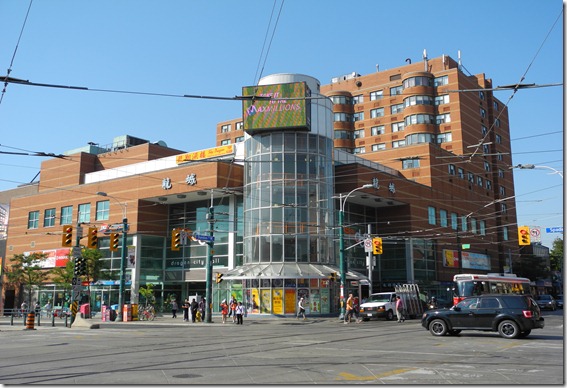
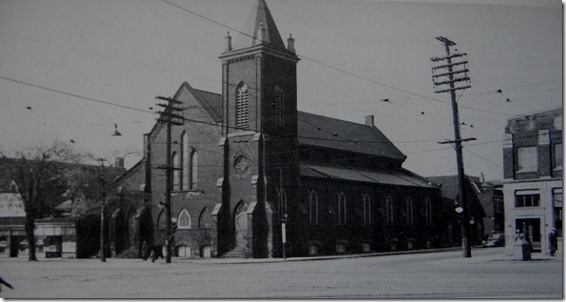
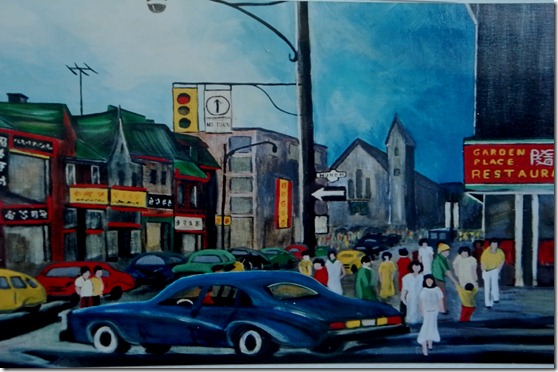
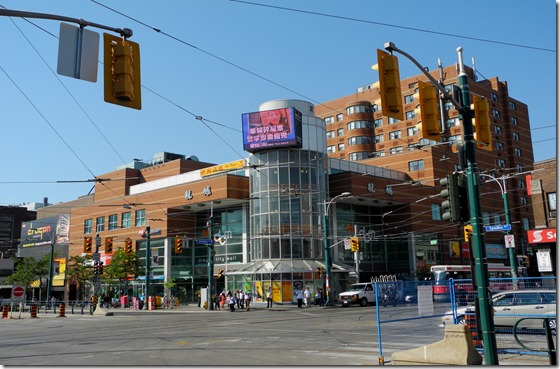
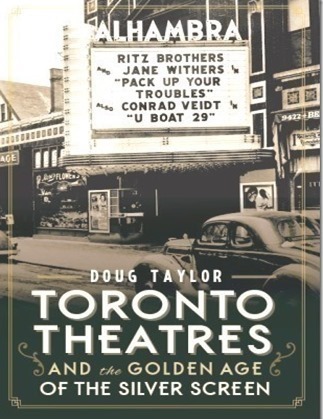

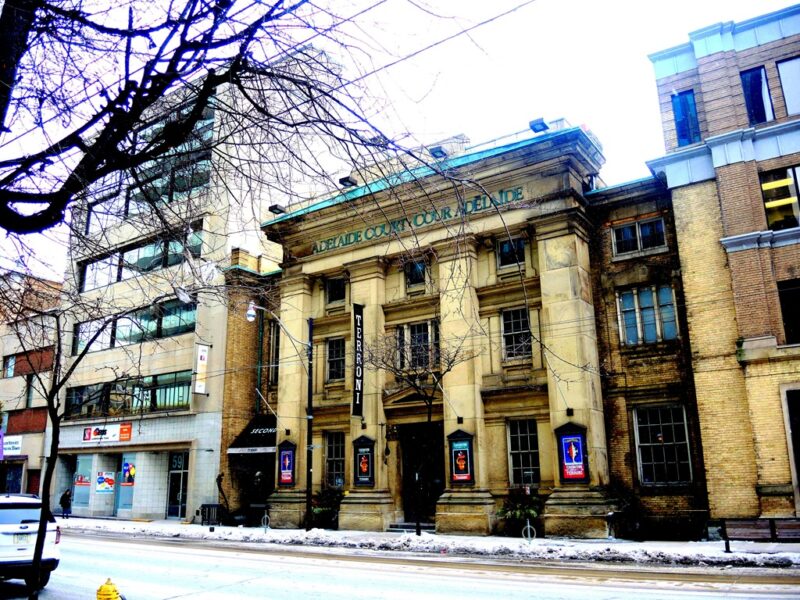
This is a fascinating post! The China Mall is a familiar sight to me. I had no idea there used to be a church there.
Hi Bea,
Thanks for the comment on the post about the southwest corner of Dundas and Spadina. I live in the area, and personally believe that Spadina is the most interesting street in Toronto.
Doug
Thank you for the photograph of the church, I was one of the 1956 Hungarian refugees and remember looking in from just inside the doors as it was packed with the Christmas faithful and listening to them singing in the old somber voices of displaced Hungarian nationals.